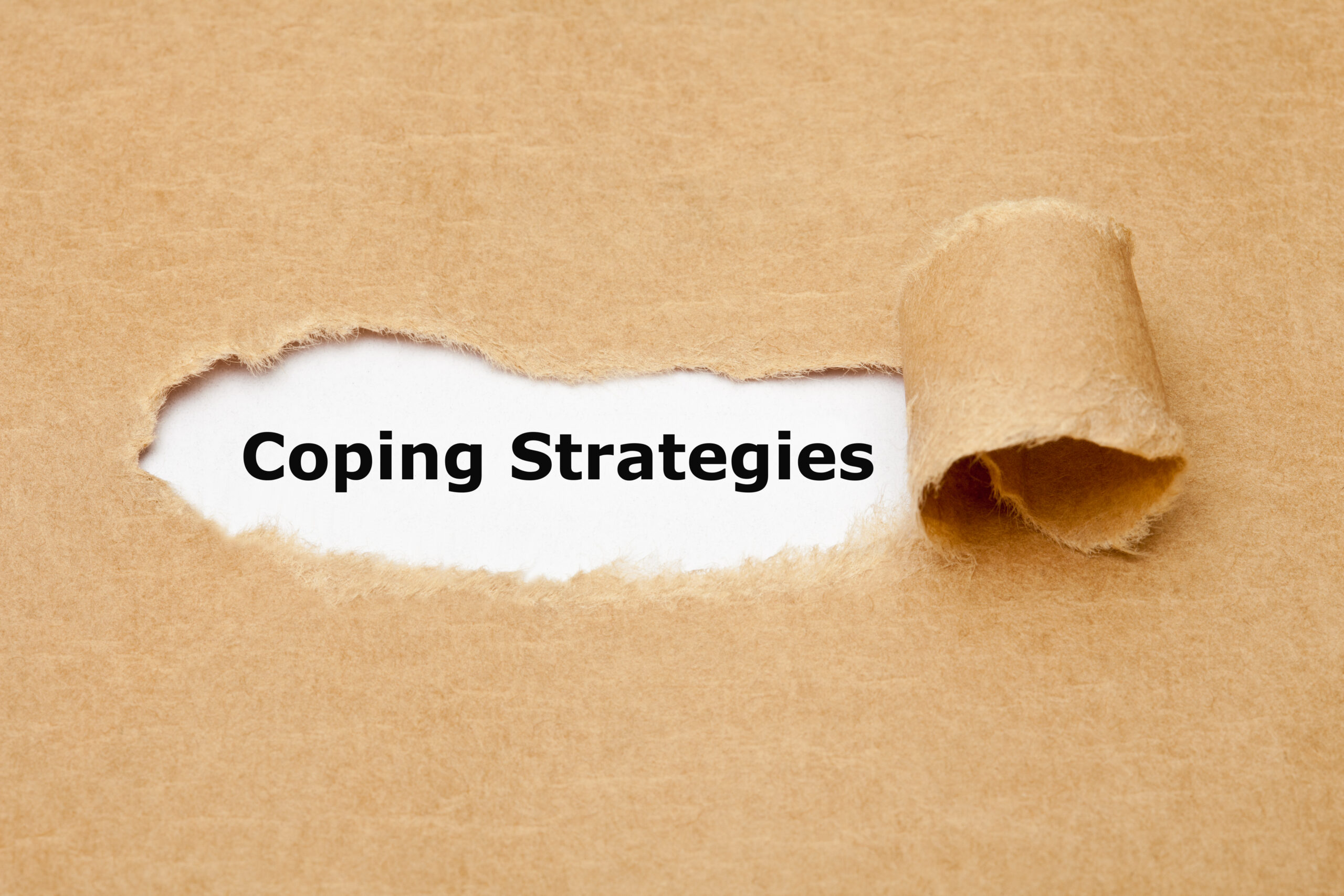3 Things: Occupational burnout edition
Zeroing in on why workers are feeling burned out, plus what works—and what doesn’t—to alleviate it.

Text Coping Strategies appearing behind ripped paper. Concept about the series of behavioral and psychological skills and actions needed to handle stressful or unpleasant situations.
Research repeatedly shows that the prolonged pandemic and related shocks to the workforce have created a surge in workforce mental-health issues. They’re usually related to burnout caused by any number of things, such as the isolation of remote work, or the hardships of balancing work and life demands in new ways. Often, it’s overwork. Burnout and stress also can be related to worker concerns about workplace safety in the age of COVID-19, or employer mandates to go back to the workplace.
Whatever the cause, it’s a certainty that workplace anxiety and stress—PTSD—is at high levels. Here are three recent developments that help contextualize what’s happening now.
1. Identifying the underlying factors most likely to cause employee burnout
The working world is scrambling to find answers for rampant workplace burnout and the mental-health crises brought on by almost two years of pandemic stress.
Many employers have agreed that they are responsible for the mental health of their workforce, but the attempts to address the crisis often fall short of addressing underlying issues. Time and again, organizations try to solve workplace issues with one-off trainings and additional programming, but refuse to look at the No. 1 culprit for workplace burnout: excessive workload and toxic work culture.
In particular, stress-management classes and relaxation seminars do not measurably improve worker mental health. Researcher William Fleming, with the University of Cambridge in the U.K., analyzed data on 26,471 employees to discover the impact of one-off trainings on employee well-being.
The results show that such classes could actually have a negative, rather than a positive, effect.
Here are three areas that are likely leading to burnout in your organization, according to analysis in Harvard Business Review:
Excessive collaboration. “Excessive collaboration is a common ailment in organizations with too many decision makers and too many decision-making nodes,” writes Garton. “It manifests itself in endless rounds of meetings and conference calls to ensure that every stakeholder is heard and aligned.”
In the pandemic era, this is exacerbated by video calls, “Zoom fatigue” and the loss of more frictionless collaboration that could take place in a central office. Common tactics to alleviate this problem are for leaders to shorten meetings, encourage employees to block off time on their schedule and to allow team members to keep their cameras turned off.
Wellness pros must make the case to senior leaders that creating space on employees’ calendars isn’t a matter of personal responsibility. It has to be a priority for top leaders if it is going to succeed.
Poor time-management. Again, an ethos of personal responsibility creates an environment where disempowered employees are left with few alternatives to stave off burnout. “Most often, employees are left on their own to figure out how to manage their time in ways that will reduce stress and burnout,” writes Garton. “They have limited ability to fight a corporate culture in which overwork is the norm and even celebrated. And few employees have the power—or temerity—to call off unnecessary meetings.”
The first step for wellness pros to combat this problem is to get some raw data on how much time is being spent on activities that don’t produce profit for the business. With the many tools at the disposal of HR and comms in the remote-work era, make an accounting of the hours frittered away on meetings or other time-wasters and build a case what practices must be stopped.
Overloading capable workers. When a company fails to hire new employees and build capacity to meet new work demands, the most capable employees in the organization will face greater suffering.
“The overload problem is compounded for companies because the best people are the ones whose knowledge is most in demand and who are often the biggest victims of collaboration overload,” writes Garton. “In one company we studied, the average manager was losing one day a week to email and other electronic communications and two days a week to meetings.”
2. Vaccination mandates will surge
The number of U.S. employers requiring workers to get vaccinated is expected to surge over the next several months, according to a new survey by Willis Towers Watson. At the same time, organizations will be experimenting with financial incentives to encourage employees to get vaccinated, and expanding testing requirements as they move to reopen worksites.
By the fourth quarter of this year, 52% of employers could have one or more vaccine mandate requirements in their workplaces, the survey findings indicate. That represents a dramatic increase from the current 21%. Mandates could include allowing only vaccinated employees to access common areas such as cafeterias, or requiring vaccination as a blanket policy.
3. Nike gives employees a week off
One iconic American organization has a novel way to combat burnout. It’s giving everyone a week off. Staffers at the athletic giant have been given permission to “Just don’t it.” As BBC writes, “Staff at Nike’s corporate headquarters in Oregon have been given a week off to support their mental health, ahead of the return to the office in September.”
Bumble, LinkedIn and others have taken similar steps in recent months, as companies struggle to alleviate the burdens of burned-out, exhausted workers. If you’re not sure how to support your employees amid such jarring turbulence and stress, time off is always a nice gesture.
Of course, there’s an alternative view as well. Perhaps vacations alone aren’t enough. Some, like Nike, act on the premise that encouraging workers to take their PTO and go on vacation is the solution. However, less than half of respondents to a Visier survey said that taking time off alleviates burnout, even temporarily.
The biggest factor driving burnout? An increase in workload.
COMMENT
Ragan.com Daily Headlines
Tags: COVID-19, Harvard Business Review, Nike, pandemic burnout, PTSD, vaccine mandates, Willis Towers Watson, worker overload, Zoom fatigue






